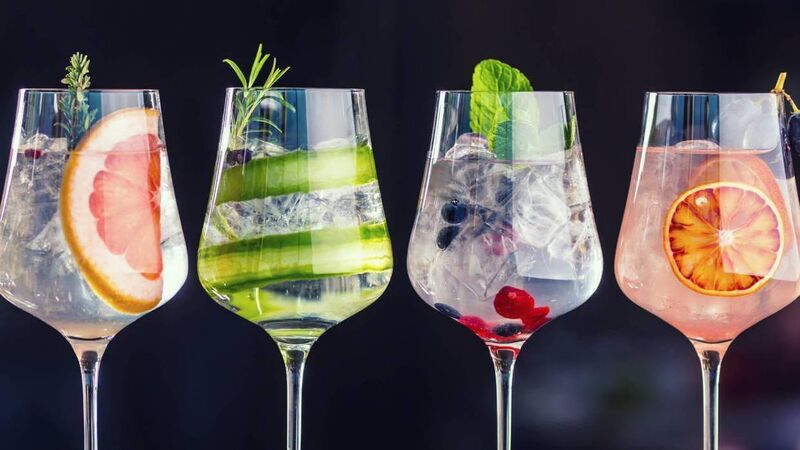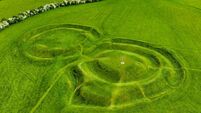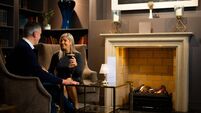Cocktails for children, really? What are they teaching kids

Ailin says she has a big problem with children drinking non-alcoholic cocktails on holiday at swimming pool bars, ‘this is about society grooming young children to associate holidays and good times with drinking alcohol’.
“You what?” I asked, not quite believing what I was hearing. He had been explaining how his parents had taken him out of school in the middle of term and brought him abroad for a week. Yep, not necessarily the most responsible thing to do, perhaps, but then, it has to be admitted, prices do go absolutely crazy the minute the school holidays start and what young parents can afford the rates in high season?
Anyway, that’s actually not what caused the dismay. I was trying to conceal my disapproval at how he said he had spent his holiday. This little boy had, according to himself anyway, spent quite a bit of time in the pool’s water-bar, drinking cocktails. Whaaat???
I had asked him what he did on his holiday abroad? For example did he like the sea? Did he build lots of sandcastles? Did he get to eat anything unusual? Did his Mam and Dad get him anything nice in the shops? All his news was about this amazing pool; this big pool with umbrellas and a built-in bar and seats in the water.
So of course I asked him if he’d enjoyed lots and lots of Cokes and orange juices and Fanta and the like. Oh no, he told me. He got cocktails. Just like mum and dad.
“Cocktails?” I gasped.
“I had Children’s Cocktails,” he declared adding that they all sat every day in this amazing pool with the built-in bar, drinking cocktails.
“Cocktails,” I said evenly.
There are Shirley Temples (grenadine, lemon-lime, orange juice garnished with a maraschino cherry and an orange slice.) There’s what they call a Frosty Hawaiian Mocktail which, I learned, is “a non-alcoholic version of the classic Blue Hawaiian cocktail made with a blend of tropical juices and coconut cream and garnished with a fun umbrella and blueberries.” There is a Crème de Menthe Mocktail made with a mix of Crème de Menthe and Limonata (some form of lemonade I imagine?). Cotton Candy Mocktails are billed as “a fun and magical drink for kids made with candy floss, fruit juice and sparkling water. There’s even the children’s version of the classic drink Sangria – a Non-alcoholic Sangria.
Then there’s a drink billed as “one of the most unique and interesting cocktails you can add to your kid’s party menu.” This is the Shrub Cocktail which, apparently, according to those who know about - or push - such things, is some kind of “retro” drink made with fruit syrup, vinegar and sugar. This is left to ferment before being mixed with water. Hello?
To me this is about society grooming young children to associate holidays and good times with drinking alcohol. It’s about making a connection in young minds between holidays and the bar. It’s about moving away from the idea that a holiday is about jumping waves or swimming or building sandcastles on the beach and writing your name in seashells or burying your small sister up to her neck in sand.
Nope. This is teaching children that holidays are supposed to about sitting in a bar, drinking. Whether or not the bar is in a swimming pool or not, it’s a bar!
And while these Children’s Cocktails are most definitely not alcoholic they resemble real alcoholic cocktails that are made for adults. As the writer James Baldwin said, “children have never been very good at listening to their elders, but they have never failed to imitate them.” So if you sit in a pool bar sipping cocktails for a significant part of your holiday and you let your child sit in the pool bar with you sipping Children’s Cocktails, what is your child learning about what one does on one’s holidays? In all fairness!
Looking back, one of the most interesting parts of my history curriculum at secondary school was when we learned about how the small children of affluent families dressed back in the day. We all found it fascinating and more than slightly insane. Throughout the 1600’s and 1700’s for example, the offspring of wealthy families were clad in miniature versions of the horrible, stiff, tight, uncomfortable and immensely fussy clothes worn by their elders. Boys of wealthy families endured powdered wigs, knee breeches and lace trimmed waistcoats. Before the age of seven they were made to dress exactly like their mothers in stiff corsets (stays) and gowns - until they were “breeched” and allowed to discard these miniature gowns. Girls were essentially forever immobilised by whale-bone bodices or stays, heavy, floor-length gowns and high-heeled shoes. Interesting note: If you ever browsed through a gallery of 18th century portraits, you could be forgiven for assuming that they were all of girls because every single child seems to be wearing a frilly, fussy flouncy dress. But in actual fact, many of these are portraits of small boys dressed, as society and tradition decreed, like miniature replicas of their mothers. Have we learned anything in 300 years?
True, today’s society doesn’t force children to dress in stiff, uncomfortable, heavy gowns and high heels or force little boys to wear long frocks. But you gotta admit: We do force them to play like adults – too many parents these days don’t read to their children or play word games with them or teach them nursery rhymes or tell them stories or take them for walks - they hand them phones and iPads to keep them quiet from the moment they’re able to sit up straight. Then they take them on holidays and instead of building sandcastles and jumping into the sea with them, they bring them to a water-bar and give them miniature, non-alcoholic versions of adult cocktails. Thus teaching them that holidays are about sitting in a bar drinking. Dear God.







 App?
App?




